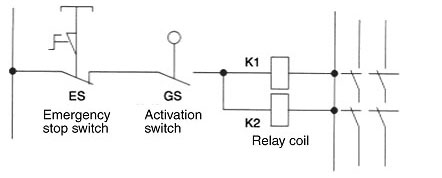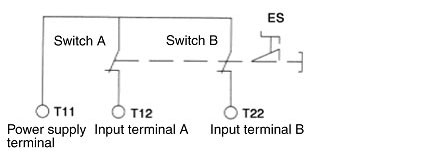What is redundancy?
Redundancy is duplication. The probability of hazards arising from one malfunction in an electrical circuit can be minimized by creating partial or complete Redundancy (duplication).
The following diagram shows an example circuit where the use of two or more relays or switches in parallel enables performing the total function if one of them is malfunctioning.
Redundant Circuit Configuration Example Using Two Relays

Redundant Circuit Configuration Example Using Two Switches
